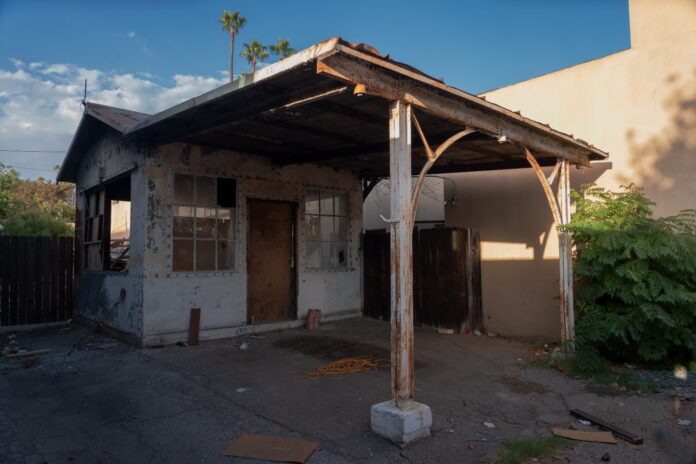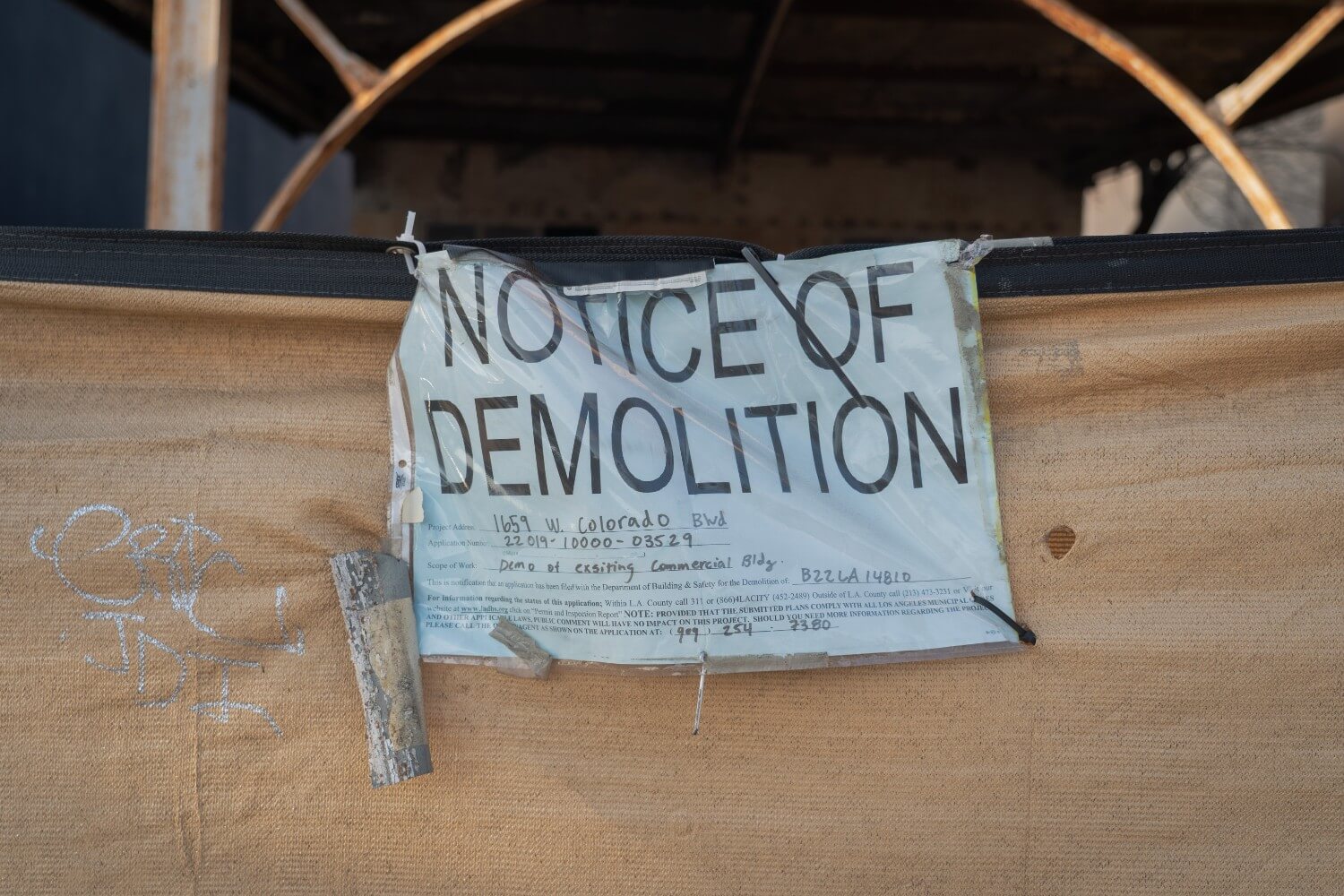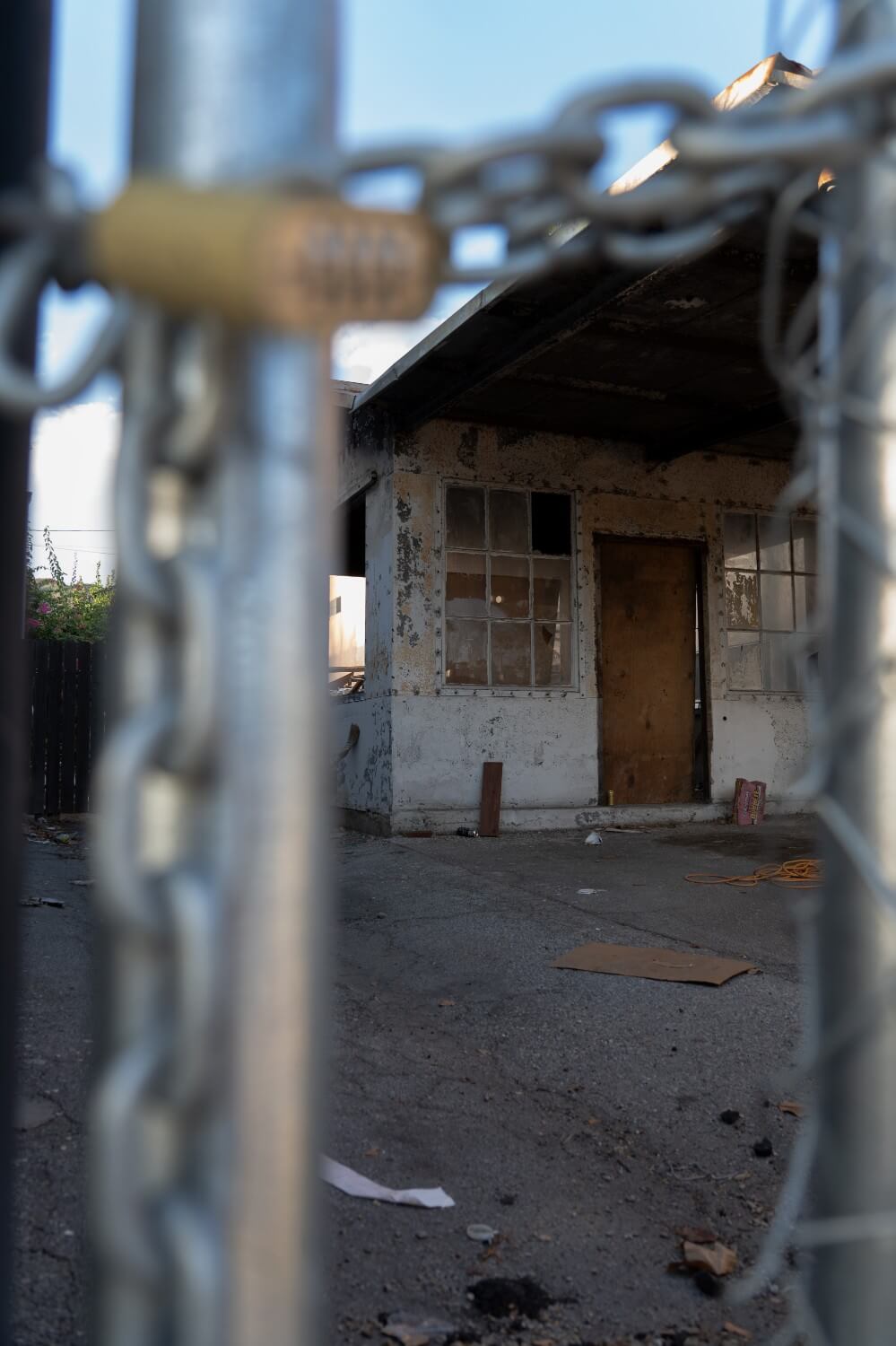
A 103-year-old gas station, located on the 1600 block of Colorado Boulevard, was recently purchased along with its neighboring property by Nick Wing of the Paradigm Collective. The small, 14-foot wide building is known as the Jay Risk Standard Oil Service Station and has been located in Eagle Rock for the past 91 years, when it was moved from its original location, according to the Eastsider LA. President and secretary of the Eagle Rock Historical Society David Dellinger, who also works as ITS systems administrator at Occidental, nominated the gas station to become a Historical Cultural Monument (HCM), which would make it worthy of preservation by the Cultural Heritage Commission. Dellinger said the station is special because it is the last of its kind in LA.
“It’s been sitting there since 1931. We figured we should at least give [it] proper support,” Dellinger said. “Seems a shame to just scrap it.”
Built in 1919, the structure once belonged to Standard Oil of California and was originally located by their Downtown LA office on Spring Street, according to the Historic Resources Survey Report.
“I’m not a big fan of Big Oil but it is part of the history of LA,” Dellinger said. “LA is a car culture place and to have a building that was [at] the start of that … and it sits here in Eagle Rock, is kind of a unique thing.”
Much of the concern and debate from the private Eagle Rock community group on Facebook, began over the summer when people took pictures of the “Demolition Notice” signs on the structure, which was filed by Wing’s development company.
Wing said they filed the permit to remove the insides of the building, not to demolish the building, and will be on hold until the status of the station is finalized.
“Imagine you have a garage with shelves in it, and you’re taking those shelves down, you’re not actually demoing the garage, so that’s where some of the confusion I believe came in,” Wing said. “In order to see some support beams, we have to demo a few walls.”
Dellinger said the Eagle Rock Historical Society first began its efforts with the nomination and preservation process after Wing’s company reached out to them.
“We were talking with them and then all [of a] sudden, there was a demolition permit they pulled and I was like, ‘Wait, we thought we were working with you?’” Dellinger said. “So it kind of fell apart.”
According to Wing, his company understood in the building’s purchase that the station had potential historical significance and reached out to the historical societies to ask for guidance.
“We reached out to the historic societies, but they didn’t reach out to us. Some of them did not even know what we were talking about, but we reached out to these historic societies and asked them, ‘Hey, does anyone want this thing?’” Wing said. “We knew that, ‘Okay, we buy it, we could either move it somewhere without having a big problem,’ but now here we are with people wanting [it] to stay there for whatever reason.”
Paradigm Collective bought the property in May 2022 as a home for Wing’s two companies, his development business and his real estate and mortgage brokerage business.
“We decided that that property would be perfect because it has the lot with the service station on it, which, regardless [of if] we keep it there or not, there is still parking that would be ample for our office,” Wing said.
Dellinger most recently submitted a nomination for the gas station to become an HCM. The Cultural Heritage Commission voted unanimously to consider the gas station for protected landmark status Oct. 6.

According to Los Angeles Administrative Code, the criteria for a building or structure to be considered as an HCM include association with historical events and people or distinctive characteristics of a given historical period.
Dellinger said there are three distinct steps any monument application must go through before being qualified as such: the acceptance of the application, an on-site tour and a vote held by the Commission.
If made a Historical Cultural Monument, the building may not necessarily be protected from demolition but requires a review from the Cultural Heritage Commission.
Alternative options for changing the interior of the building include moving the structure — either in Eagle Rock or to another Los Angeles neighborhood — or refurbishing and repurposing it for the community in another way, according to Wing.
“If it went back to its original location on Spring Street, that’d be amazing,” Wing said. “The nostalgia that these people have for the service station is kind of fantasized. They generated it on their own.”
Bryce Gonzales, an Eagle Rock resident for the past decade, said he did not think many people noticed or knew of the gas station’s history before the recent Facebook posts.
“It looks like the set of an old movie. It’s so old,” Gonzales said. “It was a vacant structure that was only kind of neat to look at, but there wasn’t much value in the decades prior.”
Gonzales said he is in favor of the station becoming an HCM and staying where it is.
“If we could somehow make it stay and utilized, it could be something neat and something cool for the community,” Gonzales said. “There was talk of [the station] moving locations and it wouldn’t be lost, but then it wouldn’t be in Eagle Rock.”
Gonzales said he finds the Facebook discussion around the station to be funny.
“Everybody is getting worked up about this gas station. It’s great,” Gonzales said. “It’s interesting to see who is engaged by it. I’m like, ‘We [have] to save this thing,’ and some people are like, ‘I don’t care. I think we should tear it down.’”
Wing, who grew up in Northeast LA, said his development company is focused in the area and believes the station would be better off placed in another location.
“We just feel that it will be a better contribution to the community if it was placed elsewhere. At a park or somewhere else, it’s more enjoyable for somebody,” Wing said. “Otherwise, you know, it’s gonna be a coffee shop or something.”
Wing said regardless of the decision, the building will need to be refurbished.
The service station was previously owned by Clairville Plumbing & Heating, who also held office space next door. According to Wing, they are the building’s second owners, and the previous owners used the space both for residential and business purposes.
“They lived there. They used the service station as the laundry room and storage for so long,” Wing said. “At a certain point, they couldn’t develop it anymore, and it needs to be redeveloped.”
Wing said that initially, his group’s long-term plan was to renovate and repurpose the space where the gas station is for a multi-story, mixed-use development that could potentially include both housing for the community and a local business.
Similar to this gas station, a former Texaco Gas Station in operation from the 1940s to the 1980s in Silverlake, was saved and dismantled with hopes for it to be placed along the LA River. However, according to The Eastsider, those plans have yet to come to fruition.
With this in mind, Dellinger said they want to save the building in Eagle Rock.
“Once it’s in another neighborhood, we wouldn’t know what happened,” Dellinger said. “There’s other buildings that have had that same fate where they go somewhere and then [we] just never hear about them ever again.”

A company known as Esotouric, which provides tours of historical sites and “secret” places in LA, has been invested in the preservation of the service station, and has posted several blog and social media posts about the site.
Both the Esotouric blog and the nomination for Historical Cultural Monument point to the service station’s association with Route 66 during the Eagle Rock Constructional Alignment from 1934 to 1936.
As the fight for preserving the site continues, Wing said he has a different idea of what his role as a developer should be.
“I’m a local. I grew up in the community and at the very minimum, I want to see the community flourish. I’m a developer, so I can actually be a person who makes changes,” Wing said. “A lot of people say developers are the bad guy, and I was told that by my mentors, 10 years ago, when I first started doing it. ‘You’re always going to be the bad guy.’ But in actuality, I think that we’re adding value to the neighborhood.”
Contact Sophie Steinberg ssteinberg@oxy.edu
![]()


































